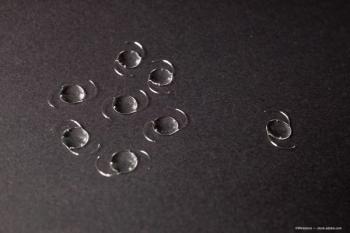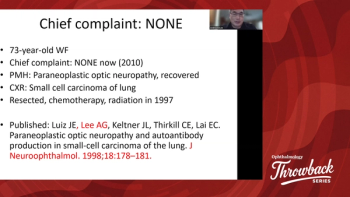
Variable dosing of ranibizumab investigated for treatment of neovascular AMD
Miami-One year into a 2-year study using an optical coherence tomography (OCT)-guided variable dosing regimen for ranibizumab (Lucentis, Genentech) for neovascular age-related macular degeneration (AMD), two key findings have emerged, according to lead investigator Philip Rosenfeld, MD, PhD.
"OCT appears to be a powerful technique for following these patients. We can see how quickly the patient has a response to the therapy, and we can get an idea of when to stop treatment and when to reinitiate therapy," said Dr. Rosenfeld, professor, Bascom Palmer Eye Institute, Miami.
"The other important conclusion is that everybody is different, and that a fixed treatment regimen isn't going to be possible for all patients unless its every month and that probably overtreats most patients and becomes a logistical nightmare over time," he said.
Before planning the PrONTO study, Dr. Rosenfeld had been involved in a phase I/II study of ranibizumab. After that study was concluded, patients were then enrolled in an extension study in which they could be treated as needed. Observations from these studies helped shape the development of the PrONTO trial and led to the rules for re-treatment used in that study.
"In watching patients after they finished the phase I/II trial but before they got into the extension study, we made some observations," Dr. Rosenfeld said. "One was that OCT was able to detect the earliest signs of the fluid coming back in the macula, even before patients lost vision and certainly before you could see the changes on fluorescein angiography. The other one of our observations was that if the fluid came back and we treated it with ranibizumab, it went away," Dr. Rosenfeld continued.
"We could regain any vision that may have been lost when the fluid came back, and in many cases the vision would continue to get better. These were our anecdotal observations, so we decided to test these observations in the PrONTO study; that's where we got our re-treatment rules."
PrONTO trial protocol
In the PrONTO trial, patients were given an injection of 0.5-mg ranibizumab at baseline, month 1, and month 2. If they continued to have any fluid, leakage, or other evidence of active neovascularization after month 2, they received additional injections until they became fluid-free.
Criteria for reinjection after the initial three injections were: increase in central retinal thickness of 100 µm, loss of 5 letters with any fluid by OCT, new hemorrhage, new classic choroidal neovascularization (CNV), or persistent fluid detected by OCT 1 month after an injection.
From months 3 to 24, patients in this ongoing study received a visual acuity test, exam, and OCT every month, fluorescein angiography every 3 months, and reinjection as needed.
Forty patients were enrolled in the study. The mean age was 83 years, 65% were women, and all were Caucasian. The mean visual acuity was 20/80.
Baseline lesion characteristics showed that the mean central retinal thickness was 394 µm. Fifty-seven percent of patients had minimally classic lesions, 25% had occult with no classic, 18% had predominantly classic, and 25% of all the lesions were classified as retinal angiomatous proliferations.
Newsletter
Don’t miss out—get Ophthalmology Times updates on the latest clinical advancements and expert interviews, straight to your inbox.


















































.png)


